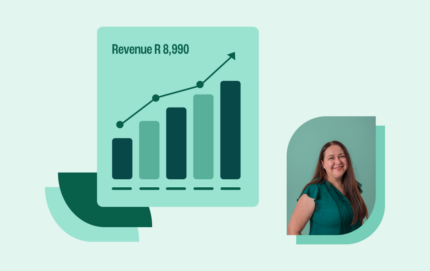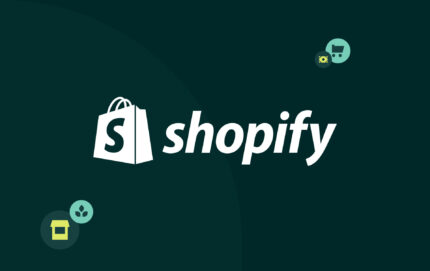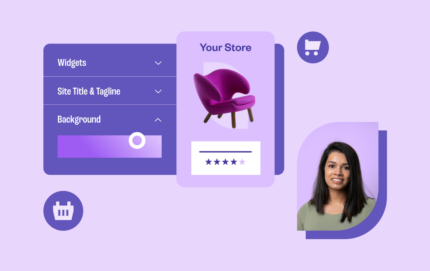In this age of digital commerce, having a thorough digital marketing strategy can literally make or break your business. Leila Davies, our Digital Marketing Manager who has almost two decades worth of experience working in the digital industry shares their advice on what you can do to take your business to the next level by attracting the right type of online shoppers to your website, ie. those who will make a purchase and become loyal customers.
You’ve got an online business that you want to ramp up or really start getting some traction on – great! Now you want to start looking at how to market what you sell. Even better!
Stop. Take a breath. Put together a strategy first.
Before starting with anything, you need to know what your goal is for your business. Sales? Leads? Brand awareness? Knowing this will dictate the different tactics you use.
Next is knowing your target market. Who do you want to sell to or get the attention of? Are there smaller groups/segments of people you want to focus on more?
From there, you need to know your budget. Remember that budget also applies to resources other than the money you have to spend on advertising/marketing. It also means how much time you have, how many people you have, and what equipment you have – you have to work within constraints for these too.
There are three core marketing strategies to keep in mind: owned, earned and paid.
- Owned: marketing efforts you put out there yourself, e.g. your Facebook page, email and billboards, etc.
- Earned: the awareness you earn from people seeing your efforts and sending it on to friends, word of mouth, etc.
- Paid: paid social media ads, Google Ads, third-party website banners, etc.
Digital marketing plays in all three of those areas.
Digital marketing starting blocks
Generally speaking, owned and earned media are long-term strategies to employ. Paid media typically yields quicker returns or results but can be expensive, depending on the industry you are playing in, the platforms you choose and the resources you have.
In the ecommerce space you are already putting a lot of time and effort into being online – take advantage of that. Do your research into what platforms would work best for you – where is your audience? Who are they even? Would selling on Amazon or Takealot benefit you? You’re online already, tap into where your customer base is too.
Now that you’ve given that some thought – let’s pivot back to the start of this blog post. What are your goals? Let’s narrow it down to the two most common to give some focus: brand awareness and increasing sales.
For the sake of this article, I’m going to put a little focus on the most popular digital marketing areas: social media, your website and paid media.
Organic social media tactics
Organic social media is generally good for brand awareness and consideration. Here you want to get your brand out there and showcase what you’ve got, execute creative ideas, engage with your customers and build relationships. For those who are unsure, organic social media refers to social media efforts that are not backed by advertising budgets – your posts, pages and profiles, essentially.
This falls within the owned marketing space, but if people share your content then it joins the earned space.
Some things every social media page/profile needs to have are:
- Bio: tell people who you are and what you stand for. Tone of voice is important here.
- Posts: make sure you’re using a variety of different types; images, videos, live videos, etc. Try to create conversations instead of just talking at people. Ask questions, use polls and provide value in your posts. Canva or similar platforms can be a great help if you don’t have the resources or skills to design assets.
- Reviews: make sure these are visible so people can use them as part of their research. Try to respond to them as quickly as possible, even the good ones. This builds trust.
- Shopping options/stores: if you’re able to, setting up shops and making use of social commerce is a great way to beef up your ecommerce strategy.
- Community management: talking to your customers. Respond, make conversation, ask questions, answer questions and complaints. This is critical for your social channels. Ignoring this could lead to brand reputation damage and a lack of trust in your brand and products.
- Influencers or brand advocates: who can you pair with that suits your target market and will help to bring more awareness to your brand? Note: sometimes you will have to pay people for this.
- Channel choice: is your audience using these channels? Each channel works a little differently and people use them for different things, so make sure your posts fit the platforms.
Some great social channels for ecommerce are Facebook, Instagram (or Meta) and TikTok.
Website
If you don’t use social commerce and do have a website – make it count. This is the space that holds the most longevity. It also acts as your online brochure, possibly your own shopping platform. It could be said that this is your most important owned marketing space. It’s great for awareness and conversion.
SEO, or Search Engine Optimisation, is critical here – making sure people can find your site when they search on Google. It’s also known as organic search. Your site needs to be easy to navigate, it needs to be relevant to your audience and offer value. Knowing how to get in touch with you is a must-have for your user, for those times when they have questions or want to ask about a delivery delay.
Without a good SEO approach, your website won’t be found by those looking for your service or product. You don’t pay for this traffic, you earn it. People who find your website via organic search are more likely to trust what they find than finding it via an ad.
Knowing what you want to say is the most important thing for your website, and how you present that is equally so. Think of terms you want to be found for when people search, for example. Do keyword research and find what fits you – then make sure you are creating content around those themes in ways that add value to your audience. Add them to your meta data.
Some general website pointers here:
- WordPress: there are many templates that help you build a website, no coding is needed. You’ll need time and a desire to learn, but it can be fun to build your own website!
- Yoast: this is a plugin via WordPress that will help ensure your SEO is going in the right direction. It helps you make sure you are focusing on your main terms for each page.
- Navigation: keep your menu simple, and make sure your product pages are easy to find and understand via headings and some copy.
- Out of stock: mark out of stock items as such – it’s incredibly frustrating for people to go through the effort of adding things to their cart only to find out there is no stock on the last step. This is a great way to lose potential customers.
- UX journey: this is your user journey where the goal should be to make things easy to find or purchase. Make your call to actions clear, keep your pricing transparent and ensure your buying process is simple. Pro tip – use an email system that shoots off automatic emails that give people a discount if they abandon their cart, it’s a great way to bring them back to complete their purchase.
- Design + imagery: keep it authentic if possible, use it to break up your pages and add a personal touch. Again, Canva can help you here.
- When in doubt keep it simple and clean: design, navigation and copy. Clutter is difficult to navigate.
- Do your research on which integrations you want to use if you are going to use your website as a shopping platform.
Paid media
Forming part of your own marketing strategy, paid media can be a very good conversion-focused tactic. It can also be great for building more targeted awareness. Paid media refers to online advertising that is backed by spend to promote the messaging.
You can create ads on all social platforms, Google Ads and even via partnerships with websites like News24 (this can be quite costly).
This tactic allows for tight targeting so you can really hone your messaging to specific segments of your target market.
Where do you send people once they have clicked on your ads? Your website or a landing page are the most common. Make sure that these reflect the highest relevance to your audience and product or service – is there a specific page on your website that would be the most relevant, does your landing page speak to what you are trying to sell?
Paid social advertising tips:
- Social ads suggestion: various platforms offer shopping ads, while it can be a little cumbersome to set up, it will help you sell specific items instead of advertising your business as a whole.
- Boosting posts: promoting your social posts by putting money behind it will get more people to see them. These are great for building audience awareness and are best done on posts that are already doing well. If they resonate organically there is a higher chance that they do well for a larger audience as well. Alternatively, important news is good to boost as well, new product launches for instance.
- Tracking: set up the tracking given on each platform so you can monitor how your ads are performing.
- Remarketing: here you can retarget people who have not completed specific goals on your website, with social ads. Your tracking needs to be set up correctly. You could target people who have abandoned their carts, for example, or people who have bought from you in the past when you have big discounts on.
- Targeting: this is the biggest pro of paid social tactics – you can dig deep into targeting and be very strategic, but you can also keep it simple until you learn how it works properly. Don’t be afraid to play around on the platform to see what options are available before you make any ads live.
Google Ads tips:
There are a few different channels under this platform. Your ads will show up anywhere in the Googleverse that you opt into, and set up ads for. You can use text, images, videos, or all of the above.
- Paid search: use keywords that are action-driven rather than terms people would use to find out more information. You can use this channel to help build awareness, but it’s best suited to bringing conversions or sales. It can be quite costly, but is very direct and driven by intent if you are using your keywords correctly. These ads are text-based.
- Display: have you seen those images/banners on some websites that advertise a product? This channel forms part of that and is best suited for awareness or consideration. There are many different sizes you can use, just make sure they are eye-catching and convey your message easily.
- YouTube: you can run video ads and banners on relevant channels or videos depending on your targeting. YouTube is best suited for awareness.
- Other types of campaigns: there are other types like Performance Max but these can be a little tricky to set up and/or manage. Luckily Google has a wealth of resources you can use to find out how these types of campaigns work.
- Remarketing is possible on all of these channels as long as your tracking is set up correctly and you set the audiences up. Remember to make sure your messaging relates to what you want to bring people back to accomplish on your website or landing page.
- Your best bet is to start off small and go from there.
With any of these tactics, you need to give yourself time and patience to learn. Nothing works overnight. Find ecommerce groups on social media with people that will help you, and do some online courses for paid social and Google Ads platforms. Invest in growing and learning as much as you are investing in your products – this is what will keep you going.
One thing to bear in mind for any digital marketing tactic you use – test, test and test again. The best way to learn how things work is to actually do them and learn yourself.
A note on your goals
To keep it short and sweet – track your goals. Most platforms require you to add tracking code to your website so that you can track conversions/traffic to your site/sales etc. This is done pretty easily and they all give you step-by-step instructions on how to set it up on your website.
Use tools like Google Analytics or the social platforms’ conversion tracking and reporting options, set it up and check your results at least once a week. Make sure you are measuring against your most important goals: sales, clicks, impressions, etc. You can’t grow your success if you don’t know where it is AND isn’t coming from. Without monitoring your results you won’t know what tactics you are employing that are wasting your money, and which ones are making you money.
Some homework for you to complete: do some research on your target market. Where do they hang out online? What are their interests, goals and habits? Where do they live and how old are they? What products do they look for – can you fill a gap? Use this information to create a digital marketing strategy for your business. Plan your channels, your tactics, your targeting, your budgets and set up your reporting and test your buying process. I challenge you to create three SMART goals for yourself. Build from there.
Ready? Set? Go!




